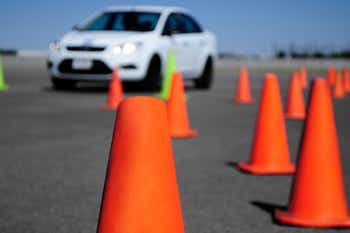It used to be that teenagers would dream of getting their driver’s license the moment they turned 16, but that has changed. Whether it’s the expense of gas and owning a vehicle, the availability of ride-hailing services like Uber and Lyft, or the convenience of being able to communicate with friends whenever they want via social media, times have changed and more teens are waiting to get behind the wheel.
Waiting to drive may help teens save money, but it also lessens the requirements for supervised driving hours. As anyone who’s sat in the driver’s seat for the first time knows, it can be an exhilarating and terrifying experience. Regardless of their age, novice drivers are more likely to get into collisions than experienced drivers due to … lack of experience.
Here are ways parents can help their children transition from passengers to drivers.
- Set limits. If you don’t think your state-mandated requirement for supervised driving hours is sufficient, tell your teen how many hours you require before letting them take the test. Consider enrolling them in a driver’s education course for additional practice.
- Driver’s Ed. isn’t just for students. Consider taking an online course to brush up on your traffic laws and the skills your student will need to learn. You can study with them and you’ll both become better drivers. It will also help you establish a plan of attack for your practice sessions.
- Vary the routine. It’s a good idea not to take your kid on the freeway for their first driving experience, but you also don’t want to restrict them solely to parking lots. They’ll need to learn to drive on different types of roads, which will require them to pay attention to different things: pedestrians on city streets, curves and animals on country roads, how cars handle in different weather conditions, and where to focus their eyes while driving at night. Riding with them in these different scenarios will help you see how they handle themselves, as well as make them aware of how to make adjustments.
- Practice evasive maneuvers. Even the most attentive drivers are at the mercy of other drivers who share the road with them. What if the car in front of them were to suddenly stop or the weather caused the car to break into a skid? It’s one thing to hear how one should react to these situations, but it’s completely different to experience them first-hand. Head to an empty parking lot with a set of cones to simulate a stopped vehicle and have them practice hard braking. Set up a slalom course so they can experience the feeling of avoiding an object in the road. Be sure to demonstrate the techniques to them before they attempt each maneuver.
- Consider a defensive driving course. If the idea of practicing donuts in a parking lot with your teen doesn’t appeal to you, leave it to the professionals.
- Have fun. While there may be white-knuckle inducing moments when relinquishing control to your new driver, it’s also a great time for bonding. Be sure to have them put the cell phone away, keep their eyes focused on the road ahead and (try to) enjoy the ride.
Want more tips? Visit the Mercury Drive Safe Challenge site to learn additional ways to keep kids safe when driving. Feel confident about your driving? Teens and parents can test their knowledge with this teen driver quiz.


